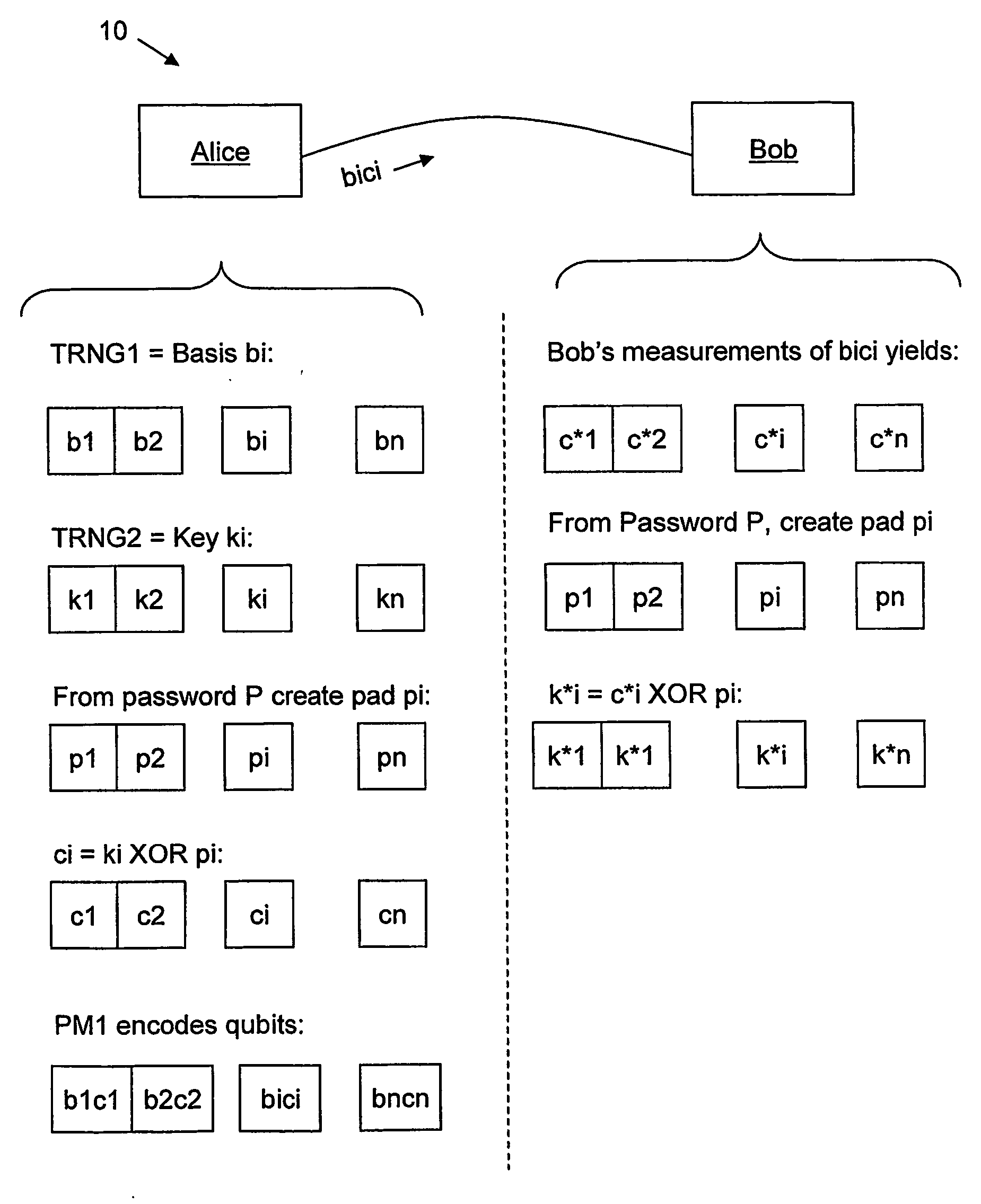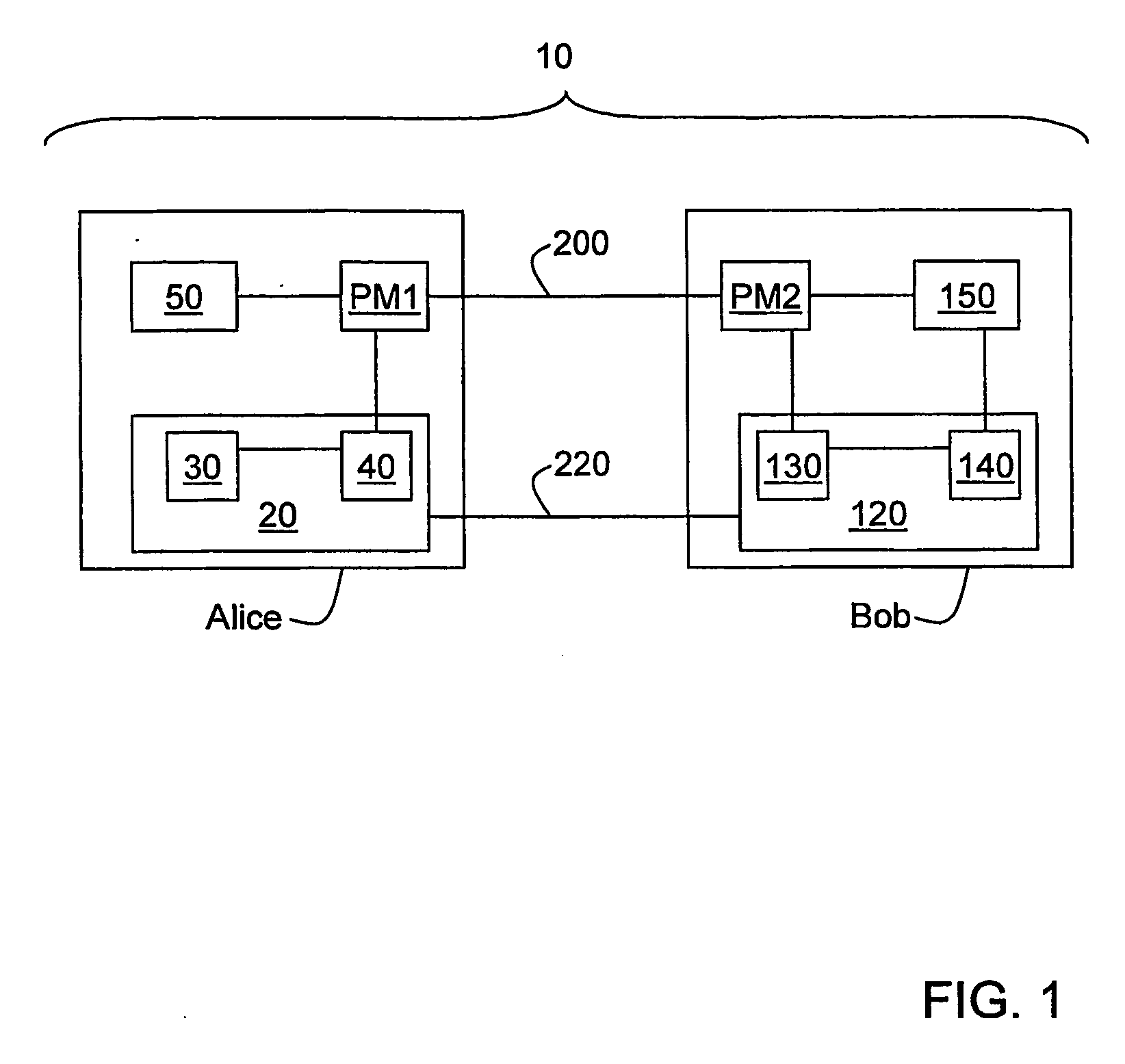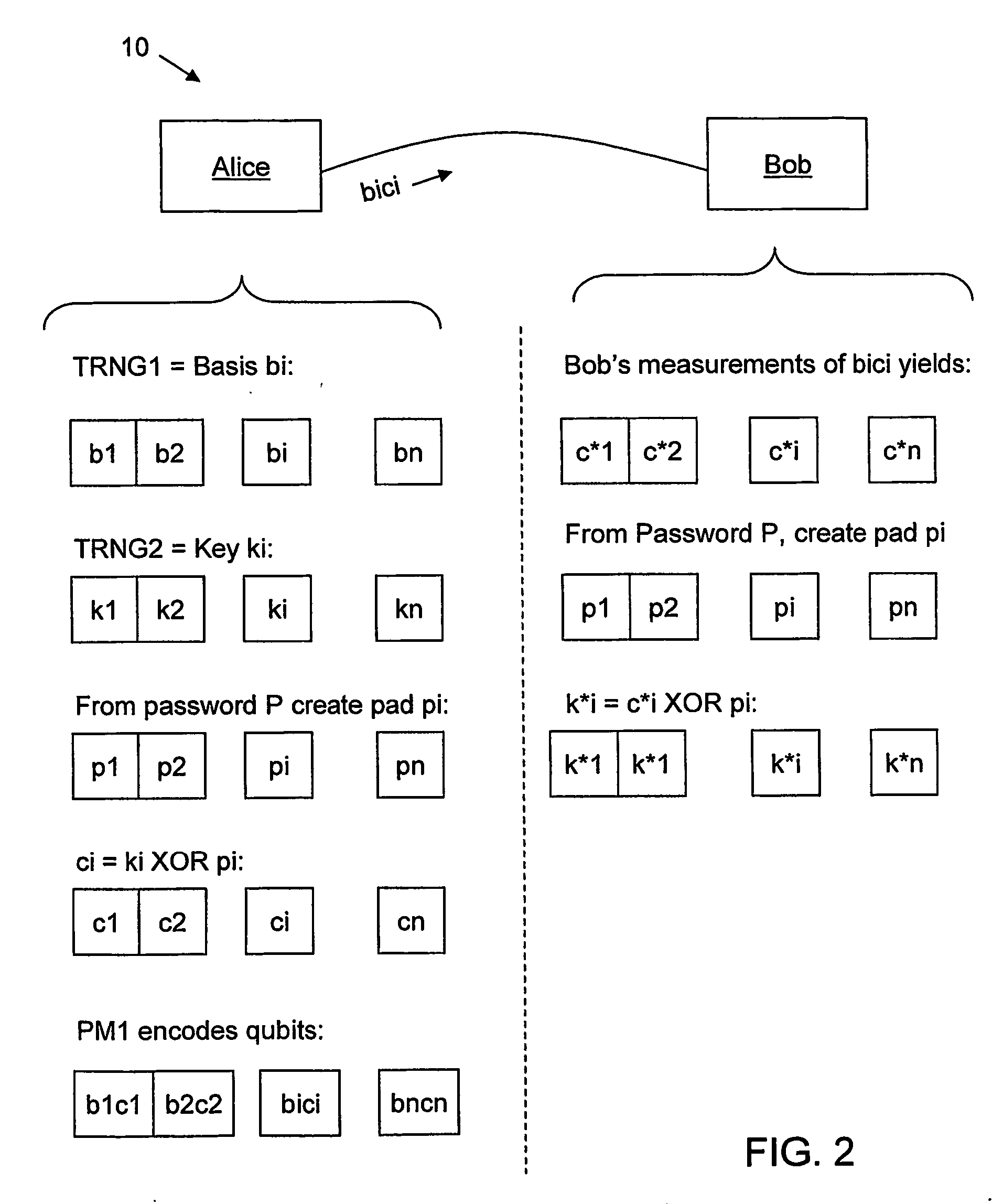Qkd with classical bit encryption
a classical bit and encryption technology, applied in the field ofquantum cryptography, can solve problems such as serious problems
- Summary
- Abstract
- Description
- Claims
- Application Information
AI Technical Summary
Problems solved by technology
Method used
Image
Examples
Embodiment Construction
[0013] As described in greater detail below, a first aspect of the invention is a method of performing quantum key distribution (QKD). The method includes generating a random set of key bits, encrypting the key bits, and then using the encrypted key bits to form encrypted qubits.
[0014] A second aspect of the invention is a method of performing QKD. The method includes, at a first station: generating a random set of key bits, generating a pad (password) by a stream cipher (e.g., AES-256 in CTR mode), XOR-ing the key bits and the pad to obtain encrypted key bits, and then modulating weak optical pulses using the encrypted key bits to generate encrypted qubits.
[0015] A third aspect of the invention is related to the second aspect of the invention, and further includes performing the following acts at a second QKD station optically coupled to the first QKD station: measuring the encrypted qubits using a random basis, and recovering at least a subset of the key bits from the measured e...
PUM
 Login to View More
Login to View More Abstract
Description
Claims
Application Information
 Login to View More
Login to View More - R&D
- Intellectual Property
- Life Sciences
- Materials
- Tech Scout
- Unparalleled Data Quality
- Higher Quality Content
- 60% Fewer Hallucinations
Browse by: Latest US Patents, China's latest patents, Technical Efficacy Thesaurus, Application Domain, Technology Topic, Popular Technical Reports.
© 2025 PatSnap. All rights reserved.Legal|Privacy policy|Modern Slavery Act Transparency Statement|Sitemap|About US| Contact US: help@patsnap.com



